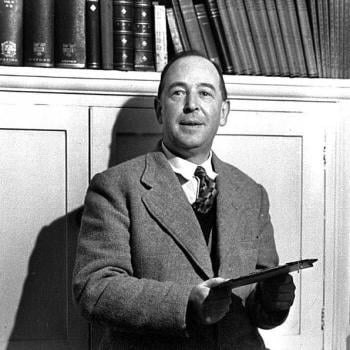And let’s test the premise: Those of you who go to dance clubs, do you really want that same kind of music in church? Wouldn’t you find that embarrassing?
When you’re DJing a Baptist church service, is it more appropriate to mix electronic music by Daft Punk and Fatboy Slim as congregants are being ushered in or as they exit?
Such were the choreographic and theological questions at play Sunday at the 104-year-old high-steepled Church at Clarendon, which for the day replaced its usual eight-piece band and singers on the pulpit with an Atlanta wedding DJ who has hipster glasses, a table of music-mixing technology and a tendency to fist-pump while playing.
“Okay, let’s get going!” said Hans Daniels (whose DJ handle is Hans Solo) after being introduced at the start of the service, cranking up the beat — and volume — and eliciting a whoop that filled the bright, airy sanctuary. “Blessed Be Your Name” quickly became “B-B-Blessed Be Your Name,” and congregants started cha-cha dancing in their seats.
The concept may have been radical at the 125-member church a decade ago, when worship meant a piano and traditional hymns. But in order to keep its doors open during a period of churn in American religion, the Arlington church has changed its pastor (three times), rebuilt its building, overhauled its services and now finds itself in one of the epicenters of young Washington life.
And to people younger than 30, the drums and electric guitars of the contemporary rock that dominates much of American Christianity are not only not edgy, “but for them, it’s like singing hymns,” Daniels said. “Why does the music you worship to and jam out to have to be completely separate?”
Music is perhaps the most powerful spiritual tool there is, and experimentation is hardly rare for institutions trying to connect with a fickle public. Sixth and I synagogue in Chinatown puts racily dressed klezmer rockers on its altar, and the Community of Hope AME in Hillcrest Heights incorporates a go-go band, an improvising rapper and Christian hip-hop.
A DJ seems like a reasonable next step, particularly at a time when they are filling concert halls and festival lineups, seen in some circles as artists in their own right.
Yet a sole DJ, up there with his big foamy headphones in the spot usually reserved for robed choirs and clergy, raises questions: Does one person (doing a job most people associate with weddings and nightclubs) turn the service into a performance rather than a prayer? Or does it simplify a stage that has become visually busy, like some sporting events?
Daniels and associate pastor Stephen Taylor, who came up with the idea of “Church Remixed,” see it as the latter.
“This is such a pushback — where are all the musicians, and it’s just one guy? — but I think it’s what we need, instead of all this ‘let’s add another singer and someone walking back and forth!’ ” Daniels said before the service. “When I’m singing in church, I’m either looking at the screen or my eyes are closed.” . . .
“The purpose isn’t to get people bouncing. Our purpose is utilizing music, or whatever we’re doing, to communicate the message of the gospel of Jesus Christ,” said Lee, who studied divinity at Howard University and the Union Theological Seminary in New York. “If we hit that, we’re able to communicate to a generation that knows nothing about old-school gospel music. But they do know about a DJ.”
Many of the congregants at the Clarendon church Sunday are under 30, and they seemed excited by seeing something new. Like many Baptist congregations, the ethos is relatively restrained; there isn’t much freewheeling clapping, dancing, shouting or singing. But they applauded between Daniels’s pieces.
“It was much more upbeat,” said Sean Hipe, 23, who teaches preschool at the church. He especially noticed that vibe during the offering, when donations or tithes are collected. “Usually, that’s a very toned-down time. This was awesome. When he cranked it up, I feel awesome; I’m ready to give.”
Also to be lamented, not only in churches but also in clubs, weddings, high school dances, etc.: The expulsion of live musicians. Instead of human beings performing artistically for the rest of the people present, we get dehumanized electronically-generated sound.











